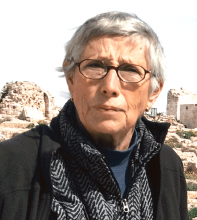You are here
The ‘de-development’ of Gaza continues
Jul 23,2014 - Last updated at Jul 23,2014
Gaza’s fate might have been very different if Israel had adopted a positive policy towards the narrow Mediterranean coastal strip after the 1967 occupation. Instead, Israel cracked down hard on Gaza’s Palestinian citizens and began planting colonies in an impoverished backwater ignored by Cairo during 19 years of Egyptian rule.
Israel deeply resented — and resents — Gaza and the Palestinians who live there, 80 per cent of whom are refugees from the coast and south of Palestine, because of their unremitting resistance to the take-over of their homeland. Consequently, Israel has adopted the punitive policy of “de-development,” described by Sara Roy in her masterly book, “The Gaza Strip.”
Palestinians cannot be permitted to have “normal lives” or advance and prosper because this would reaffirm their identity and give them legitimacy, detracting from Israel’s right to exist and recognition as the “owner” of geographic Palestine. Israelis regard Palestinians as an inferior people and refer to them as “Arabs” instead of identifying them as natives of Palestine.
Israel’s objectives were originally to encourage Gazans with education and expertise to emigrate and to promote the creation of an unskilled and semi-skilled labour force that would work for low wages and no social benefits in Israel, exploiting Palestinians by employing them as Israel’s “carriers of water and hewers of wood.” Adopting a policy perfected by the world’s colonial powers in the imperial age, Israel also fostered Gazan dependence on Israel for a whole range of goods and services.
The policy of employing Gazans in menial jobs in Israel continued until 1991, providing it with cheap labour and injecting cash into Gaza. But during the first US war on Iraq, Israel severely restricted the movement of labour from the strip into Israel and began to recruit workers from Asia. Gaza’s economy remained, however, “captive,” consuming largely Israeli goods and produce imported into the strip through Israeli-controlled border crossings.
After the Palestinians signed the Oslo Accords with Israel in 1993 and Yasser Arafat returned to Palestine from exile in Tunisia, Gaza received considerable economic aid and agriculture and business began to develop. Hotels were built in expectation of tourism, restaurants and cafes opened. Gaza exported flowers and strawberries to Europe. Hi-tech savvy Palestinians established software services firms. There was a building boom and Israeli clothing companies opened joint manufacturing facilities in Gaza, where labour remained cheaper than in Israel. Gazans spoke of turning the strip into a regional Singapore or Hong Kong. Investment poured in, mainly from Palestinian expatriates, but also from UN and international agencies seeking to improve the lives of Gaza’s poor.
While Gaza — one of the most densely populated tracts of territory on the face of the globe — may never have attained high enough economic growth to keep up with its soaring
birthrate, its people expected a reasonable level of prosperity. If they had succeeded to secure this, it is unlikely that Gazans would have remained implacable enemies of Israel which would not have faced the random firing of homemade rockets into the south or improved rockets which can now strike Tel Aviv.
After Israel withdrew its soldiers and colonists from Gaza in 2005, Palestinians hoped they would be allowed to develop and exercise freedom of movement into and out of Gaza as well as within the strip. This did not happen because a resentful Israel imposed an air, land and sea siege and blockade on Gaza and cut off the coastal enclave from East Jerusalem and the West Bank. Gaza’s isolation intensified after Hamas won the 2006 legislative election and redoubled after the Islamic group seized control of the strip in June 2007. In order to counter Hamas as an armed resistance movement, Israel should have lifted the siege and blockade and permitted Gazans to have “normal lives” instead of trying to starve or bomb them into oblivion.
Since 2007 Gaza has been the constant target of Israeli military assaults aimed at containing and weakening Hamas, turning the populace against the movement, and, time after time, destroying the strip’s hopelessly inadequate infrastructure. In the latest round, Israel claims to have bombed and shelled hundreds of targets. The majority have been homes and civilian infrastructure as hundreds of military installations do not exist in the tiny strip, 11 kilometres wide and 51 kilometres long.
Israel is once again “de-developing” Gaza by killing and wounding civilians and destroying “civilian objects,” in flagrant violation of international law and international humanitarian law. With each round of bombing and shelling, Israel drives Gaza backward and, when the bombs cease, forces its citizens to expend all their energies on rebuilding rather than moving forward, developing. Israel wants to keep Gazans barefoot and dependent for sustenance on international donors who are no longer ready to provide funds to feed, clothe, and house 80 per cent of the strip’s 1.7 million inhabitants.
Every time Israel carries out a major assault on Gaza, an international conference is convened with the goal of securing funds for reconstruction. But the money is never delivered. Instead Western leaders argue that Israel has the “right to defend itself” and is given more weapons to mount fresh attacks, shortening the periods between offensives and sustaining the everlasting cycle of violence.













